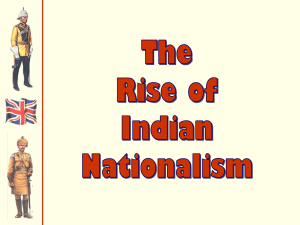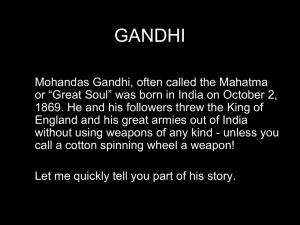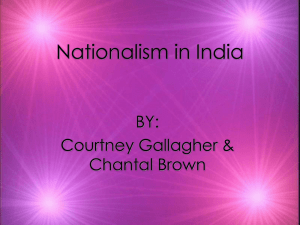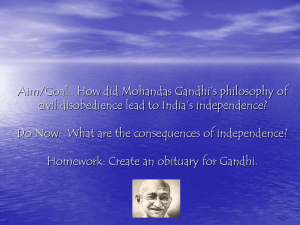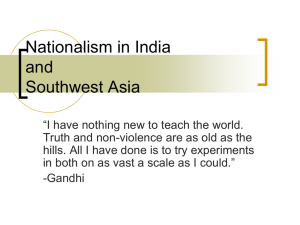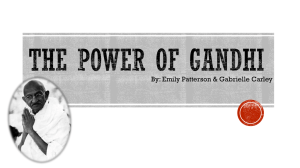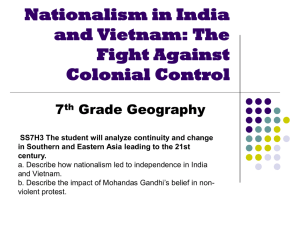gandhi4 - Gandhi World Foundation Welcomes You
advertisement
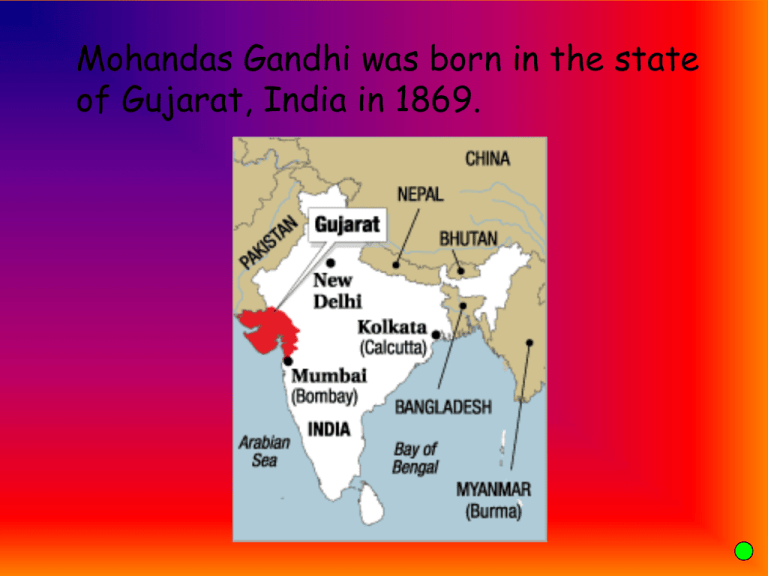
Mohandas Gandhi was born in the state of Gujarat, India in 1869. At the age of thirteen Mohandas was married to Kasturbai. The marriage had been arranged for him by his family. They had four sons. When he was 18 Gandhi came to London to train as a barrister. He tried behaving like an Englishman and took up ballroom dancing. We know that he took a dislike to his landlady’s boiled cabbage! In these days he got ‘stage fright’ when speaking in court. He returned to India in 1891, then accepted a job at an Indian law firm in South Africa. His experience of racism in South Africa proved to be a turning point in his life. He was refused admission to hotels, beaten up when he refused to give up his seat to a white man on a stage coach ….. …and thrown off a train when he refused to move to a third class compartment, after he had paid for a first class ticket. Over the next seven years Gandhi led a non-violent campaign of resistance to laws which were unfair to ‘coloured’ people. During this time thousands of Indians, including Gandhi, were flogged or jailed, and many were shot for striking or burning their registration cards. When he was about to return to India, he heard that a law was going to be passed to prevent Indian people from voting. He decided to draw attention to this injustice and became an activist. Eventually the government was forced to seek a compromise with Gandhi, and when he left South Africa, conditions for Indian people had greatly improved. Once upon a time England, the country that once ruled over our United States, also ruled over India. For over 200 years it ruled over India until this tiny man, who lived a poor and simple life, changed all that. He had been a lawyer in South Africa. Here he is dressed in a fancy suit, sitting outside his law office. But when he experienced how badly the white South Africans were treating people of color, Indians like himself and black Africans, he decided to do something about it. He led huge non-violent protests to change the laws so that people working for the railroads would be treated more fairly. He started dressing in plain, white clothing that wrapped around his body, like the common people and he began to live very simply. After he had helped some of the people in South Africa get better treatment, he returned to India. He and others believed India should have its freedom and get rid of the English rulers and their army. So he taught his people to fight back at the English - but not with guns or other weapons. He didn’t want to hurt or kill anyone. One way he taught his Indian friends to go 4 against the English was by making their own cloth instead of buying cloth from the English. You see the English would have cotton grown in India, then they would have it picked by Indians, put on ships, ship it to England where it would be spun into thread, woven into cloth, shipped back to India and sold to the Indian people for a higher price. In fact, the English had laws that forced the Indians to buy only this cloth. Gandhi said, “NO WAY, that is not fair!! Why should we have to buy back our own cotton cloth?! Let’s spin it ourselves!” So he learned how to spin cotton thread on a spinning wheel like in this picture - and weave it into cloth. He and his followers taught this old fashioned way of spinning and weaving to thousands and thousands of other Indians. Soon the English couldn’t make money off the Indians buying their cloth anymore. The English said they had to buy the English cloth. But Gandhi and his followers refused. Gandhi and hundreds of others were thrown in jail. He would be let out of jail but he would keep spinning and weaving and keep breaking the law and get thrown in jail again and again. This made big news all over the world. People around the world soon began to think that this wasn’t fair either. Even the workers in the cloth factories back in England thought this was not fair. These were the people whose jobs were being lost because of Gandhi and his supporters making their own cloth. Finally the laws about the cloth were changed and Indians were allowed by the English to make their own cloth. Next he protested against the English Salt Tax. Here he leads his fellow freedom fighters on a march to the sea to make their own salt from sea water instead of buying the expensive English salt with its extra tax. The English army beat up Gandhi and his followers and threw them in jail when they tried to make their own salt from the sea. But Gandhi and his friends kept coming back and back until the English gave up. Finally, after years and many, many non-violent protests like this, Gandhi and his hundreds of thousands of freedom fighters forced the English to leave India and allow the Indians to run their own country. They did this without weapons that could hurt or kill. Gandhi’s ideas of non-violent protest - or trying to change unfair practices or laws without hurting anyone - have been used by important leaders in our country and around the world. Here, in the United States, the most famous example is Dr. Martin Luther King Jr., when he joined others in the struggle for equal rights and justice for African Americans. Someday, when you are older, you will want to see the film called "Gandhi" which tells his courageous, challenging story that has changed our world forever. A few days later, on January 30th 1948 Gandhi was shot by a Hindu fanatic on his way to a prayer meeting in Delhi. His ashes were dipped in all the major rivers of the world before being enshrined in the Mahatma Gandhi World Peace Memorial. ‘Be the Change you want to see in the World!’ Mohandas Gandhi
